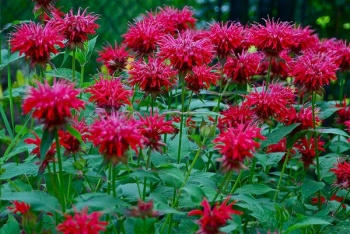Beepalm
Other Names: Bee Balm, Blue Balm, High Balm, Low Balm, Monarda, Monarda didyma, Monarde Écarlate, Monarde Échevelée, Mountain Balm, Mountain Mint, Scarlet Monarda, Té de Oswego, Thé d’Oswego, Bergamot.
Special Precautions of Beepalm
- Don't confuse with Bergamot orange (Citrus bergamia).
- Don't confuse with Wild Bergamot (Monarda fistulosa).
- Pregnancy and breast-feeding: It’s UNSAFE to use Oswego tea if you are pregnant. It might start your period, and that could cause a miscarriage. It’s also best to avoid using Oswego tea if you are breast-feeding. Not enough is known about how Oswego tea might affect a nursing infant.
Benefits and uses of Beepalm are
Beebalm has a long history of use as a medicinal plant by many Native Americans, including the Blackfeet. The Blackfeet Indians recognized this plant's strong antiseptic action, and used poultices of the plant for skin infections and minor wounds. An herbal tea made from the plant was also used to treat mouth and throat infections caused by dental caries and gingivitis. Beebalm is the natural source of the antiseptic thymol, the primary active ingredient in modern commercial mouthwash formulas. The Winnebago used an herbal tea made from beebalm as a general stimulant. It was also used as a carminative herb by Native Americans to treat excessive flatulence
- Digestion disorders.
- Gas.
- Premenstrual syndrome (PMS).
- Spasms.
- Fluid retention.
- Fever.
References
- Edible and Medicinal Plants of the West, Gregory L. Tilford, ISBN 0-87842-359-1
- Pink, A. (2004). Gardening for the Million. Project Gutenberg Literary Archive Foundation.
